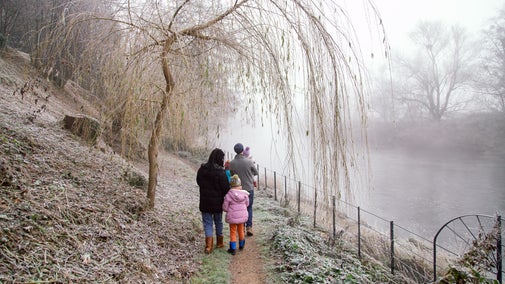Watlington Hill short walk
Oxfordshire, Buckinghamshire & Berkshire
Discover rare chalk grassland and woodland habitats, as well as many species of birds and butterflies among other wildlife, on this walk around the Watlington Hill site. The route also offers impressive views over the Vale of Oxford and along the Chiltern Escarpment.
Near to
Chilterns CountrysideStart point
National Trust car park at Watlington Hill. Grid ref: SU709935Trail information
*Soft footpaths, with one gentle ascent and one slightly steep descent. For further details, please see Terrain section.
**Due to the incline of the hill this is not an accessible walk for wheelchair users.
***Dogs welcome under close control. For further details, please see section marked Facilities.
More near here
Coombe Hill and Chequers trail
Enjoy a moderately energetic circular walk from Coombe Hill, taking in views across the Aylesbury Vale. You'll wander through woodlands, past rare chalk grassland and the pretty village of Ellesborough.

Hambleden Mill to Henley-on-Thames circular river walk
This circular Thames walk takes in a historic watermill, the Henley Regatta course, views across the Thames Valley and quiet stretches of river with the chance to spot wildlife.

Chiltern Hills three-in-one walk
Discover a challenging 8½-mile scenic walk linking three National Trust places in the Chiltern Hills: West Wycombe, Bradenham and Hughenden. Longer and shorter routes can be completed depending on your choice.

Bradenham beech woods walk
Enjoy a classic Chilterns landscape and find out more about the history of this part of the world on the Bradenham beech woods walk.

Get in touch
Chilterns Countryside, c/o Hughenden estate, High Wycombe, Buckinghamshire, HP14 4LA
Our partners

We’ve partnered with Cotswold Outdoor to help everyone make the most of their time outdoors in the places we care for.
You might also be interested in
Visiting Watlington Hill in the Chilterns Countryside
The wonderful views, rich chalk grassland and downland of Watlington Hill make it a perfect place for walks and wildlife spotting.

Things to see and do in the Chilterns Countryside
Discover the countryside sites of the Chilterns. Find the best viewpoints, walk through ancient woodland or pick a quiet spot to watch for wildlife.

Cotswold Outdoor: our exclusive walking partner
Learn about the National Trust’s ongoing partnership with Cotswold Outdoor. Find out how they help us care for precious places and the exclusive discount available for National Trust supporters.

Walking in Oxfordshire, Buckinghamshire and Berkshire
From gentle strolls for little legs to longer hikes through the rolling Chiltern hills, these are some of the best walks in Oxfordshire, Buckinghamshire and Berkshire.



